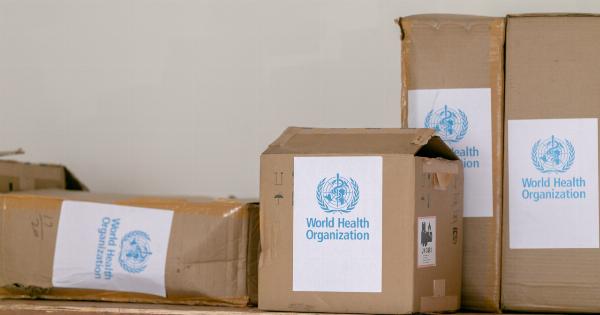Knowing the age of pregnancy is crucial for the health and well-being of both the mother and the developing baby.
It helps to determine the expected due date, monitor the growth and development of the fetus, and plan for necessary prenatal care and testing. Here are some methods used to determine the age of pregnancy:.
1. Menstrual Cycle Dating
One of the most common and simple methods to determine the age of pregnancy is based on the woman’s last menstrual period (LMP).
This method assumes that ovulation and conception occur about 14 days after the first day of the last menstrual period and that the pregnancy lasts about 280 days or 40 weeks from the first day of the LMP.
To use this method, the woman needs to know the date of her LMP and have a regular menstrual cycle of 28-30 days. If the cycle is longer or shorter, or if there is irregular bleeding, this method may not be accurate.
The healthcare provider will calculate the due date by adding 280 days to the first day of the LMP, and this date may be adjusted based on ultrasound findings later in the pregnancy.
2. Ultrasound Dating
Ultrasound is a non-invasive imaging technique that uses sound waves to create pictures of the inside of the body.
During pregnancy, ultrasound can be used to confirm the gestational age, estimate the due date, check the fetal growth and anatomy, and detect any problems or abnormalities.
The most accurate time to perform an ultrasound for dating purposes is between 8 and 13 weeks of gestation. At this stage, the fetus is small and has a consistent size and rate of growth, making it easier to measure and compare.
The ultrasound technician will measure the crown-rump length (CRL) of the fetus, which is the distance from the top of the head to the bottom of the spine. This measurement can reveal the gestational age within a margin of error of 3-5 days.
3. Fundal Height Measurement
Fundal height is the distance between the top of the uterus (fundus) and the pubic bone. As the pregnancy progresses, the fundal height increases in a predictable pattern, corresponding to the gestational age.
This method is commonly used by healthcare providers to monitor the growth of the fetus and assess the risk of preterm labor or intrauterine growth restriction.
To measure fundal height, the woman lies on her back, and the healthcare provider palpates the abdomen with a measuring tape or caliper.
The measurement is recorded in centimeters, and it should match the gestational age within a range of 2-4 weeks after 20 weeks of gestation. If the measurement is too small or too large for the gestational age, further evaluation may be needed.
4. Maternal Serum Screening
Maternal serum screening is a blood test that can detect certain hormones and proteins in the mother’s blood that may indicate a higher risk of chromosomal abnormalities or neural tube defects in the fetus.
This test is usually done between 10 and 14 weeks of gestation and can provide an estimate of the gestational age based on the levels of the hormones and proteins.
The results of this test are given as a ratio or a probability, and they do not provide a specific due date or gestational age.
However, if the test suggests a high risk of fetal abnormalities, additional tests such as amniocentesis or chorionic villus sampling may be recommended to confirm the diagnosis and determine the appropriate management.
5. Fetal Movement Counting
Fetal movement counting is a method used to monitor the fetal activity and well-being in the later stages of pregnancy. It involves counting the number of kicks, jabs, or rolls felt by the mother in a specified period of time, usually one hour.
The rationale behind this method is that a healthy fetus should exhibit a consistent pattern of movements that increases over time and responds to stimuli such as food intake or physical activity.
Although fetal movement counting is not a precise method of determining the gestational age, it can provide an indication of the fetal growth and development.
If the fetal movement decreases or stops, it may signal a problem such as fetal distress or stillbirth, and immediate medical attention is required.
Conclusion
Determining the age of pregnancy is a crucial aspect of prenatal care that requires accurate and reliable methods.
The healthcare provider may use one or more of the above methods, depending on the stage of pregnancy, the woman’s medical history, and the availability of resources. It is important to remember that no method is perfect, and that some degree of variability and uncertainty is inherent in estimating the gestational age.
Therefore, it is essential to have regular prenatal check-ups and communicate any concerns or questions with the healthcare provider in a timely manner.





























